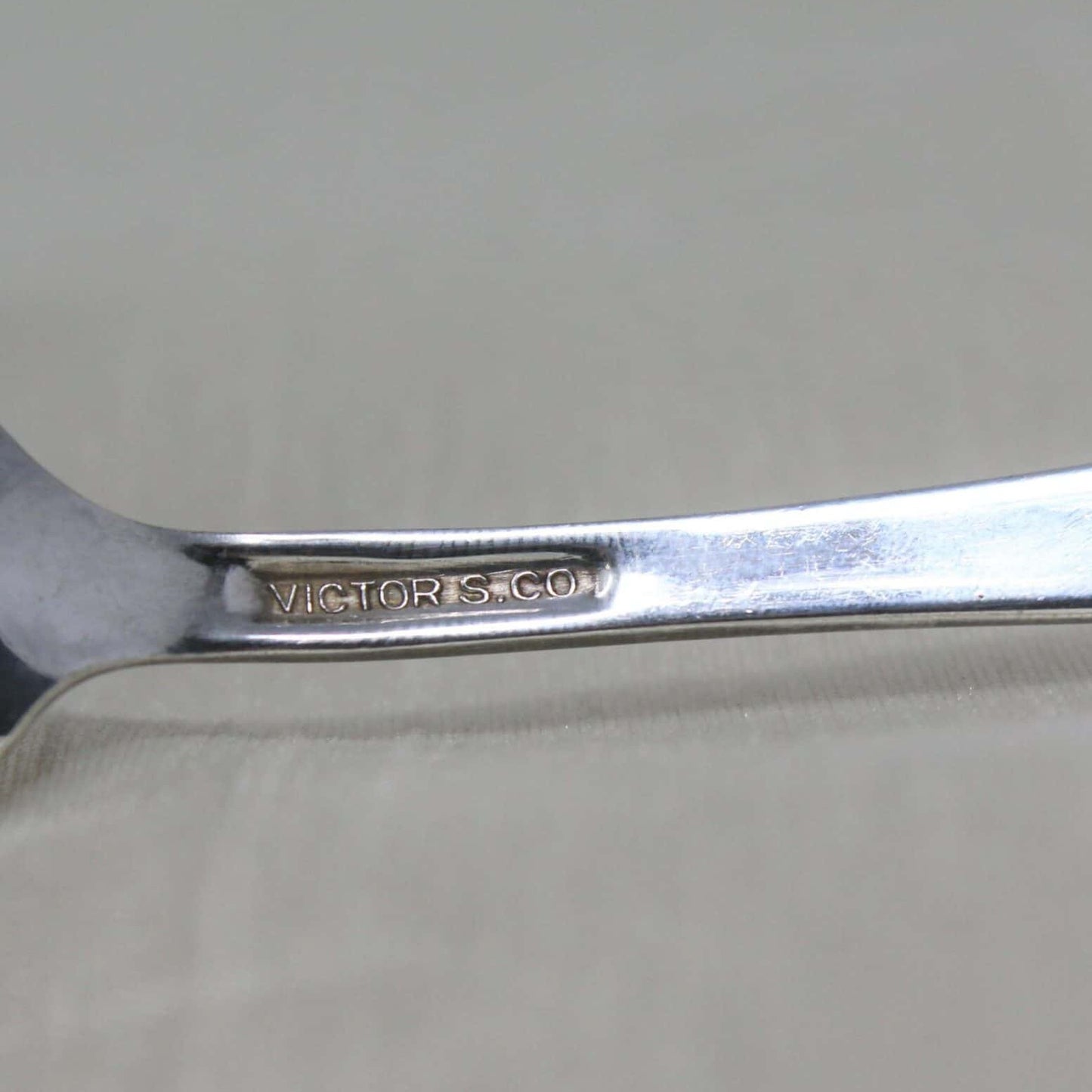Victor Silver Co
Demitasse Spoon, Victor Silver, Waldorf Astoria, Art Deco, Vintage 1932
Demitasse Spoon, Victor Silver, Waldorf Astoria, Art Deco, Vintage 1932
Couldn't load pickup availability
- Vintage Spoon, Waldorf Astoria Hotelware, Art Deco Flatware, Victor Silver Flatware, Advertising / Promotional Collectible, Demitasse Spoon, (Discontinued)
- Made in Birmingham, CT, USA
- Vintage: 1932
- Details: A beautiful demitasse spoon exclusively designed for the Waldorf Astoria Hotel in New York City. It was common for large, luxurious hotels to have their silverware branded with the hotel name. This hotel went a step further to have the flatware pattern designed just for them. It is an Art Deco / Art Nouveau pattern, very much the style of that period. This spoon served many guests at the hotel, which opened its doors in October, 1931. The name of the hotel is engraved on the back of the spoon handle. The stamp on back reads: "Victor S. Co" . There's a lot of history behind this little spoon and according to records of those who have stayed at this hotel, you may be holding the same spoon that Frank Sinatra, Cole Porter, Louis Armstrong, many politicians, authors, lawyers and even Kings and Queens have held. Would make a great gift for a collector or for someone who appreciates vintage flatware. Maybe even a history buff, or a New York Historian would also enjoy owning and using this spoon.
- Material: Silver plate
- Dimension: 4 3/8 inches Long.
- Condition: Vintage - Used. Excellent Condition. This spoon is in surprisingly excellent condition given the years and excessive use it must have had in a hotel. As with all used silverplate, there are several surface scratches. The black spot you see in the front of the spoon, is just a reflection, however, there is a small spot on the back of the spoon. Please review all pictures and make sure you love this item before purchasing, we can't accept returns. Please remember these are VINTAGE and ANTIQUE items, they are NOT new, every effort has been made to show scratches, wear and tear and imperfections.
The Waldorf Astoria Hotel The Waldorf Astoria New York is a luxury hotel located at 301 Park Avenue between 49th and 50th Streets in Midtown Manhattan, New York City. It is a 47-story 625 ft. Art Deco landmark designed by architects Schultze and Weaver, which was completed in 1931. The hotel held the title of world's tallest hotel from 1931 until 1963. Several of the luxury suites are named after celebrities who lived or stayed in them such as the Cole Porter Suite, the Royal Suite, named after the Duke and Duchess of Windsor, the MacArthur Suite and the Churchill Suite. There is even a Presidential Suite, which was the residence of Herbert Hoover for over 30 years after retirement. Frank Sinatra kept a suite at the Waldorf from 1979 until 1988. The Waldorf Astoria New York is a member of Historic Hotels of America. In October 2014, the Anbang Insurance Group, based in China, was announced to have purchased the Waldorf Astoria New York for $1.95 billion dollars, making it the most expensive hotel ever sold. A few little known facts about the hotel: 1) Right below the Waldorf is an extension of Grand Central Station, built in the 1930's to help Franklin Delano Roosevelt keep his polio diagnosis private, his train is still sitting down there. 2) Shining silver is a huge task at the Waldorf Astoria. It’s takes eight full-time staffer who polish bespoke Waldorf Astoria utensils for ballroom galas of up to 2,000 guests, with an annual budget of $150,000 to refurbish and replace worn pieces. 3) Not only was the Waldorf Salad created here but so was the Red Velvet Cake.
Victor Silver Co. was the economical trade mark of the Derby Silver Company, founded in 1872 in Massachusetts. The company made all kinds of silver items, including mirrors, combs, clocks, tableware, flatware, cups, candlesticks, trophies, fruit baskets, dishes and more. Like many silver plate companies of the time, they became part of International Silver Co (IS) in 1898. IS continued to use the Victor mark well into the 1930's mostly for hotel ware.
Share
















